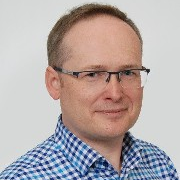Seismic Methods in Mineral Exploration
A special issue of Minerals (ISSN 2075-163X). This special issue belongs to the section "Mineral Deposits".
Deadline for manuscript submissions: closed (29 March 2019) | Viewed by 42493
Special Issue Editors
Interests: deep exploration; reflection seismic method; rock physics; vertical seismic profiling; distributed acoustic sensing; 3D seismic imaging
Interests: reflection seismic method; seismic imaging; full-waveform inversion; seismic interferometry; seismic quantitative interpretation
Special Issue Information
Dear Colleagues,
In many parts of the world, exploration for mineral deposits is moving progressively but persistently to greater depths, relying on knowledge gained from previous exploration campaigns and also on new exploration tools and techniques to efficiently guide deep and costly boreholes. With encouraging results recently obtained in various mining camps, seismic methods continue to make valuable contributions to deep mineral exploration worldwide. This Special Issue aims to publish case studies demonstrating the value of seismic methods for a wide range of mineral commodities located in a variety of mining camps across the globe. This includes topics such as regional reconnaissance of ore system elements; rock physics and quantitative analysis for improved characterization of mineral deposits; modelling, inversion, and integration of seismic data with ore deposit geology. Papers addressing technical aspects of the seismic workflow with a particular focus on state-of-the-art methods opening new frontiers in mineral exploration are especially welcome.
Dr. Gilles Bellefleur
Dr. Michał Malinowski
Dr. Milovan Urosevic
Guest Editors
Manuscript Submission Information
Manuscripts should be submitted online at www.mdpi.com by registering and logging in to this website. Once you are registered, click here to go to the submission form. Manuscripts can be submitted until the deadline. All submissions that pass pre-check are peer-reviewed. Accepted papers will be published continuously in the journal (as soon as accepted) and will be listed together on the special issue website. Research articles, review articles as well as short communications are invited. For planned papers, a title and short abstract (about 100 words) can be sent to the Editorial Office for announcement on this website.
Submitted manuscripts should not have been published previously, nor be under consideration for publication elsewhere (except conference proceedings papers). All manuscripts are thoroughly refereed through a single-blind peer-review process. A guide for authors and other relevant information for submission of manuscripts is available on the Instructions for Authors page. Minerals is an international peer-reviewed open access monthly journal published by MDPI.
Please visit the Instructions for Authors page before submitting a manuscript. The Article Processing Charge (APC) for publication in this open access journal is 2400 CHF (Swiss Francs). Submitted papers should be well formatted and use good English. Authors may use MDPI's English editing service prior to publication or during author revisions.
Keywords
- Seismic Methods
- Deep Exploration
- Rock Physics
- Data Acquisition
- Data Processing
- Modelling
- Inversion
- Integration Interferometry






